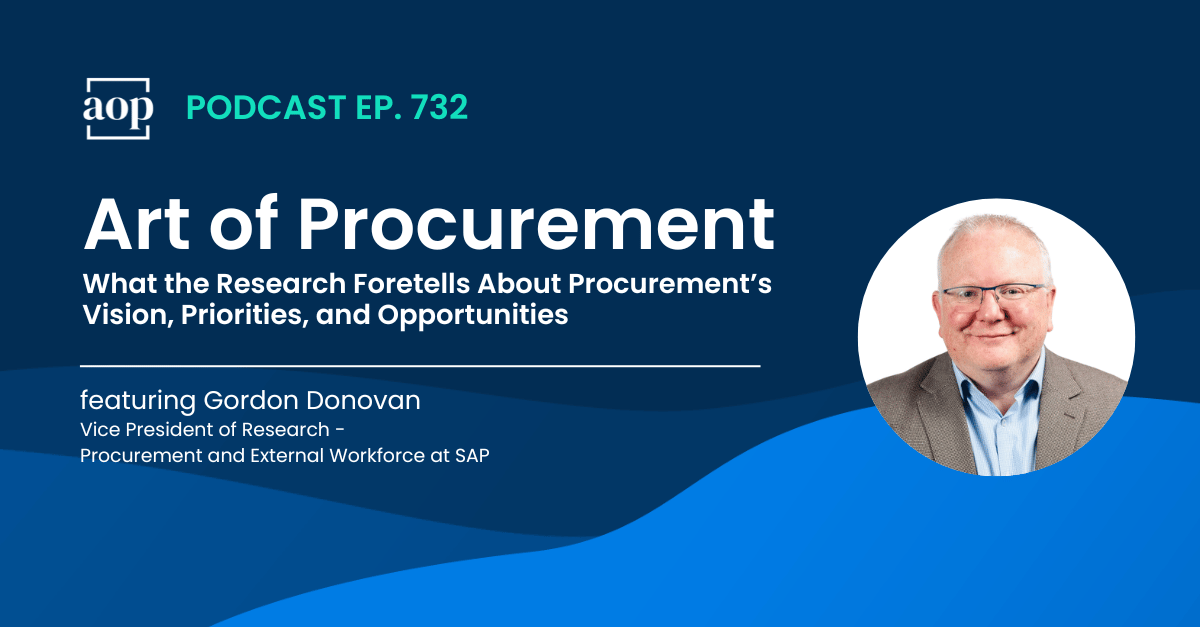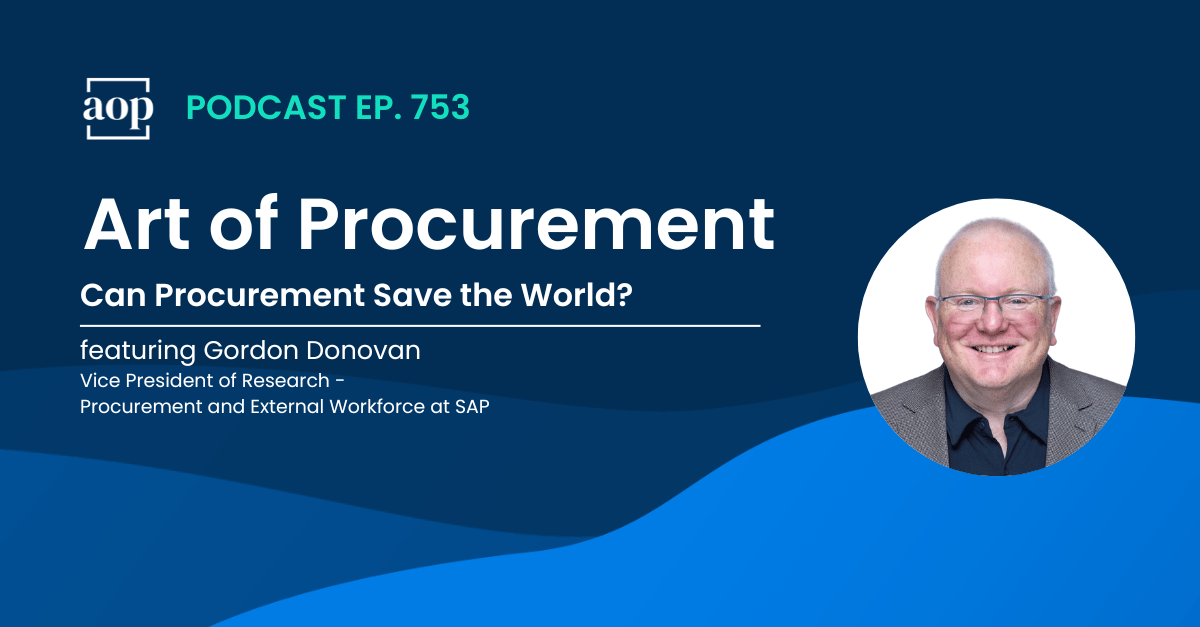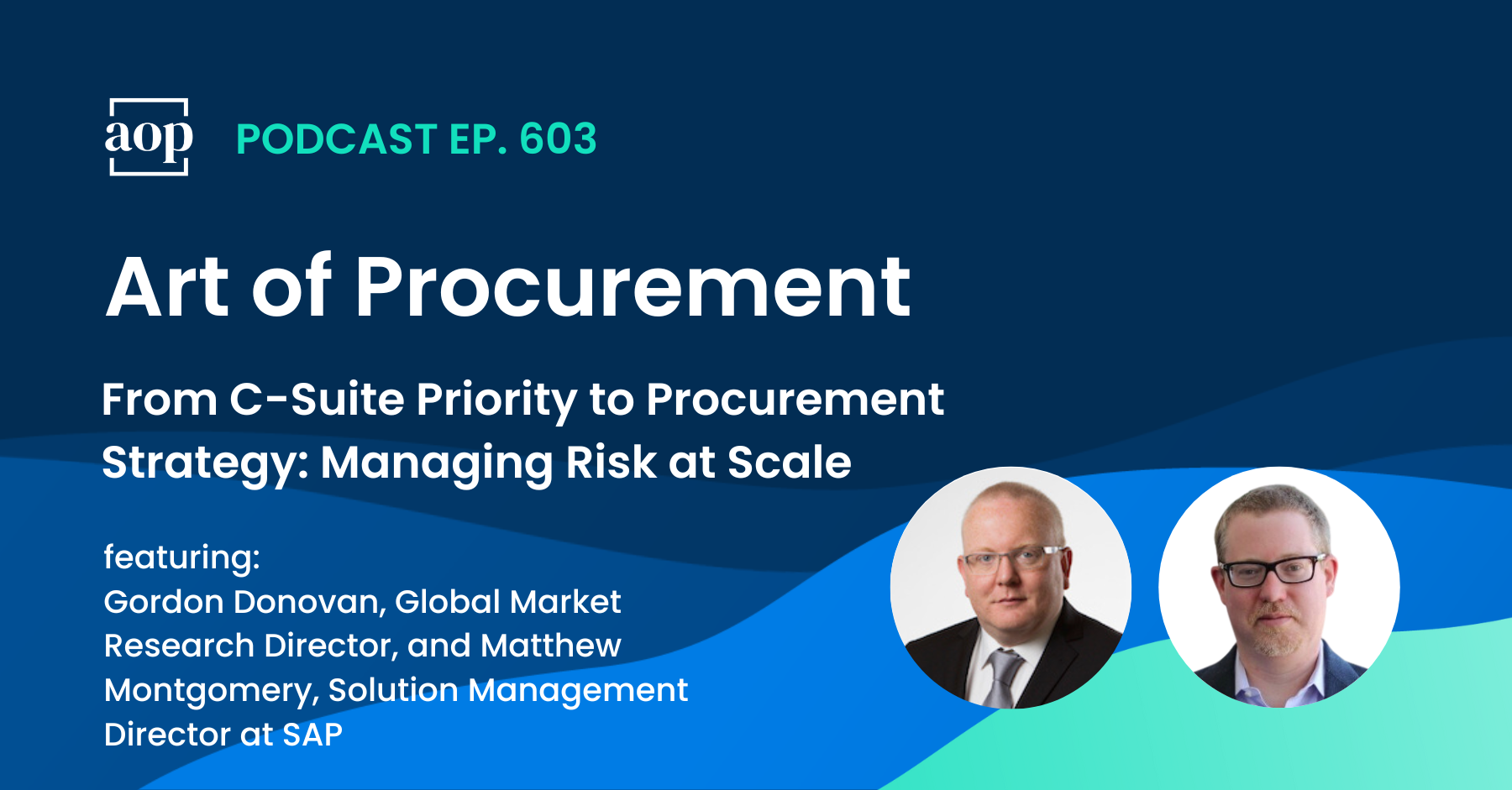“We have to incentivize the supplier to collaborate with us in a way that creates a different way of doing something – it might take us all out of our comfort zones, but it’s going to deliver a better outcome.” – Gordon Donovan, Vice President Research – Procurement & External Research at SAP
It’s time for services procurement to step out of the shadows… the strategic shadows, that is.
We recently conducted a comprehensive global research study into the current state of services procurement in partnership with SAP. The effort included a survey of hundreds of procurement leaders around the world as well as one-on-one interviews with practitioners who manage services spend for their organization.
Procurement’s potential for strategic impact will remain precarious, at best, as long as they play a limited role in decision making for services spend.
I recently had the opportunity to discuss the research findings with Gordon Donovan, Vice President Research – Procurement & External Research at SAP. We also talked about the current limitations that exist within services procurement and the levers procurement needs to pull to step out of the shadows and take their rightful seat at the decision-making table.
Listen to the Conversation
The Root of the Problem
According to Gordon, there are two important questions procurement has to answer as they look to expand their decision-making influence on services spend:
-
When considering insource versus outsource, how well does the procurement team understand the broader market in terms of capability and capacity?
Procurement has to be well-versed in market conditions if they want to make meaningful contributions to services procurement decisions and strategy, said Gordon. Whether it’s understanding the so-called rules of engagement for services spend (like never outsourcing to a monopoly) or knowing how your organization’s outsourcing activity compares to competitors in the same market segment, being able to understand the broader landscape is essential for strategic decision making.
2. Is procurement successfully collaborating with budget holders and the c-suite to become more involved in strategic discussions?
Procurement’s relationship with the business – not just functionally but also how they are perceived across business units and by company leadership – is a huge determinant of whether procurement gets a say in make versus buy decisions or the overall services spend strategy.
The research findings indicate that procurement usually has little say in terms of the nature of their relationship with the business, whether tactical or strategic, and there is often a lack of alignment between procurement’s efforts and the outcomes the business needs.
One way to turn this around, Gordon says, is by creating stronger relationships with stakeholders and budget-owners to drive more collaboration and involvement. While other stakeholders and business units might be aware of the potential value procurement can bring, if there are no relationships or collaborations in place for procurement to use as the basis for future value, it will likely go unrealized.
Are customers the key to unlocking procurement’s influence?
In the survey, less than 10 percent of respondents said their organization’s services strategy is heavily influenced by services’ impact on the end customer. This presents procurement with a great opportunity to offer a different perspective and remind the business not to forget about the customer during the decision making process for services spend.
“I would have expected that recognizing services could have an impact on your product differential or service differential to your customers would be more important,” said Gordon.
Consider, he said, how important the decision is in the retail industry to outsource final mile delivery. While a decision about this type of services spend might not be tied directly to key corporate initiatives – usually the most important driver of strategic influence – proximity to the end customer is also an important strategic consideration, and a strategic blind spot for many organizations that procurement is well positioned to correct.
Fixing Procurement’s Perception Problem
Ultimately, says Gordon, if procurement isn’t invited into key strategic discussions about services spend or given a voice in the decision making process, it is probably because of a perception problem. Stakeholders and budget holders likely view procurement as an administrative support system rather than a creative thought-partner and strategic resource.
“It needs to be recognized that the value procurement adds is more than administrative, more than compliance, but that we have strategic insights, strong category knowledge, and good market knowledge,” he said.
But how do they fix this perception problem? Through communication, education, and collaboration, he said. “The research tells us that the business values insights … and procurement has a lot of insights to offer.” It is just a matter of building those strong internal relationships and stakeholder networks and then communicating those differentiated insights to decision makers. The business is unlikely to turn its back on highly valuable strategic input, so perhaps it is time for procurement to find avenues for delivering them, whether procurement is invited to or not.
Subscribe to Art of Procurement
Apple | Stitcher | iHeart Radio | Email






